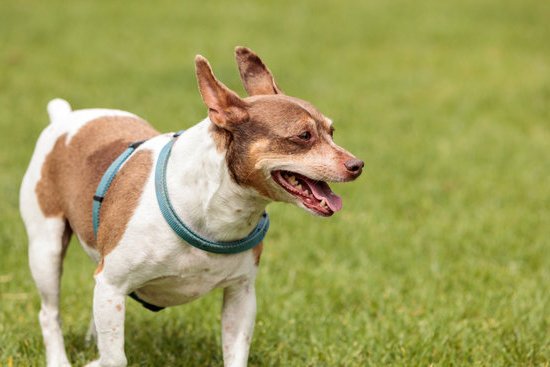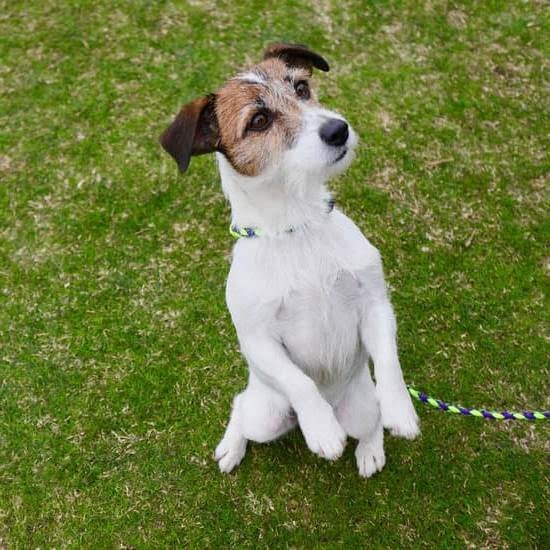Are you wondering how to train a dog not to jump? Jumping is a common behavior in dogs, but it can become problematic if not addressed properly.
In this article, we will explore the reasons behind why dogs jump, the negative effects of jumping, and the basic training principles for addressing this behavior. We will also discuss setting boundaries and consistency, using positive reinforcement techniques, teaching alternative behaviors, training exercises for jumping, dealing with specific situations such as greeting visitors, troubleshooting common challenges in training, and tips for maintaining a well-trained dog for long-term success.
Understanding why dogs jump is essential in effectively training them not to engage in this behavior. It’s important to recognize that jumping is a natural behavior for dogs and often stems from excitement or as a way to greet and seek attention from their owners or others.
The negative effects of jumping can include physical harm to individuals, especially children or elderly people, as well as potential damage to clothing or property. By understanding the reasons behind jumping and its consequences, pet owners can take the necessary steps to address this behavior.
Basic training principles are crucial when it comes to addressing jumping in dogs. This includes setting boundaries and being consistent with expectations. Positive reinforcement techniques can also be used to encourage desired behaviors while discouraging jumping.
Teaching alternative behaviors and implementing specific training exercises are also effective strategies in helping a dog learn not to jump. Additionally, addressing specific situations such as greeting visitors requires additional training methods and management techniques. Ultimately, by understanding why dogs jump and applying these basic principles of training, pet owners can successfully train their dogs not to engage in this behavior.
The Negative Effects of Jumping
Jumping may seem like an innocent behavior from our furry friends, but it can have negative effects on both the dog and the owner. It’s important to understand these consequences in order to effectively train a dog not to jump.
Physical Impact
When a dog jumps, especially on someone’s chest or shoulders, it can cause physical harm. This is particularly risky with larger dogs who have the potential to knock people over. Additionally, jumping can lead to joint problems and injuries for the dog, especially as they age.
Social Implications
Jumping can also cause discomfort or fear in people who are unfamiliar with dogs or who have had negative experiences with them in the past. This behavior could also lead to strained relationships with neighbors or visitors who might feel hesitant to come over if the dog is known for jumping on them.
Behavioral Reinforcement
Allowing jumping can reinforce other unwanted behaviors such as excitement, anxiety, dominance, or lack of obedience. If left unchecked, these behaviors can escalate and lead to other issues down the line.
Understanding these negative effects highlights the importance of addressing and training a dog not to jump. By following effective training principles and techniques, any owner can successfully guide their four-legged companion towards more appropriate behavior.
Basic Training Principles for Addressing Jumping
When it comes to understanding how to train a dog not to jump, it is essential to establish some basic training principles. These principles will serve as the foundation for addressing this behavior effectively. Here are some key principles to consider:
- Consistency: It is crucial to be consistent in your approach to addressing jumping behavior. This means setting clear rules and expectations for your dog and enforcing them consistently.
- Patience: Training a dog not to jump requires patience and understanding. It may take time for your dog to learn the desired behavior, so it’s important to remain patient throughout the process.
- Positive Reinforcement: Using positive reinforcement techniques, such as rewards and praise, can be highly effective in encouraging the right behavior and discouraging jumping.
By incorporating these basic training principles into your approach, you can create a strong foundation for addressing jumping behavior in your dog.
It’s also important to understand that every dog is unique, and what works for one may not work for another. Therefore, it’s essential to tailor your training approach to suit your individual dog’s needs and personality. With consistency, patience, and positive reinforcement, you can effectively train your dog not to jump.
Setting Boundaries and Consistency
When it comes to setting boundaries and consistency in training your dog not to jump, it’s important to remember that dogs thrive on routine and clear expectations. Here are some key principles to keep in mind as you work on this aspect of training:
- Consistency is Key: Dogs learn through repetition and consistency, so it’s important to respond the same way every time your dog tries to jump.
- Establish Clear Boundaries: Set clear boundaries for your dog about when jumping is not acceptable.
- Use Clear Communication: Dogs respond well to clear, consistent communication. Use firm but gentle commands and body language to communicate that jumping is not allowed.
Another important aspect of setting boundaries and consistency when training a dog not to jump is ensuring that everyone in the household follows the same rules. If one family member allows the dog to jump while another discourages it, this sends mixed signals to the dog and can make training less effective.
Remember, dogs are creatures of habit, so the more consistent you can be in reinforcing boundaries and expectations, the quicker your dog will learn what behavior is acceptable.
In addition to setting clear boundaries and being consistent in your response to jumping behavior, it’s also essential to provide positive reinforcement for good behavior. When your dog approaches someone without jumping, be sure to reward this alternative behavior with praise, treats, or other rewards. This positive reinforcement will encourage your dog to repeat the desired behavior and help solidify their understanding of your boundaries regarding jumping.
Using Positive Reinforcement Techniques
Positive reinforcement is a key component in training dogs not to jump. When using positive reinforcement, you are rewarding your dog for exhibiting the desired behaviors and ignoring or redirecting them when they exhibit unwanted behaviors. This can be an effective way to teach your dog not to jump on people, especially when combined with other training techniques.
One effective method of positive reinforcement is clicker training. This involves using a small device that makes a clicking sound to mark the moment your dog performs the desired behavior, followed by giving them a treat as a reward. Consistency is key with clicker training, as the timing of the click and the reward is crucial for it to be effective. This technique can help your dog understand that not jumping results in positive consequences.
Another positive reinforcement technique is using verbal praise and affection as rewards for good behavior. When your dog greets someone without jumping, make sure to immediately praise them and give them attention as a reward. This will help reinforce the idea that not jumping leads to positive outcomes.
In addition to rewards, redirection can also play a role in positive reinforcement. For example, if your dog starts to jump on someone, calmly but firmly redirect them by asking them to sit or lie down before they get attention from the person. This teaches the dog that they receive attention and affection when they are calm and have all four paws on the ground.
It is important to remember that consistency and patience are crucial when using positive reinforcement techniques for training. It may take time for your dog to fully understand what is expected of them, so it’s essential to remain consistent in your approach and be patient throughout the training process.
| Positive Reinforcement Techniques | Benefits |
|---|---|
| Clicker Training | Effective for marking desired behaviors |
| Verbal Praise and Affection | Reinforces good behavior with positive outcomes |
| Redirection | Teaches dogs to receive attention when calm |
Teaching Alternative Behaviors
When it comes to addressing the behavior of jumping in dogs, teaching alternative behaviors is key. Instead of simply telling your dog not to jump, it’s important to show them what they should be doing instead. This will not only redirect their energy and attention but also provide them with a positive alternative to jumping.
One effective way to teach alternative behaviors is by training your dog to sit on command. This can be achieved through consistent and repetitive training sessions where you use treats and praise to reinforce the desired behavior. By teaching your dog to sit on command, you are providing them with a clear and simple action to perform instead of jumping.
Another alternative behavior that can be taught is the “off” command. This teaches your dog to keep all four paws on the ground when interacting with people or in different situations. Through consistent training and positive reinforcement, you can effectively communicate to your dog that jumping is not acceptable while encouraging more appropriate actions.
It’s important to remember that consistency and patience are key when teaching alternative behaviors. It may take time for your dog to fully understand and comply with these new commands, so it’s essential to remain patient and persistent in your training efforts.
| Alternative Behaviors | Benefits |
|---|---|
| Teaching sit command | Redirects energy and attention Provide a positive alternative Reinforces desired behavior |
| Using “off” command | Encourages keeping all four paws on the ground Communicates that jumping is not acceptable |
Training Exercises for Jumping
Exercise 1: Sit-Stay Training
One effective exercise to train a dog not to jump is sit-stay training. Start by having your dog sit, then ask them to stay while you take a step back. If they remain in the sitting position, reward them with a treat and praise.
Gradually increase the distance and duration of the sit-stay as your dog becomes more proficient at this exercise. By teaching your dog to remain calm and composed in a sitting position, you are redirecting their energy away from jumping.
Exercise 2: Desensitization Training
Desensitization training involves exposing your dog to situations where they normally jump, such as when greeting visitors or during playtime. Use a leash to control your dog’s movements and encourage them to remain calm. When they refrain from jumping, reward them with treats and positive reinforcement. With consistent practice, your dog will learn that remaining relaxed and composed brings rewards, while jumping does not.
Exercise 3: Distraction Techniques
Another training exercise for addressing jumping behavior is using distraction techniques. For example, when your dog starts to jump during greetings, have a toy or treat ready to divert their attention. Encourage them to engage with the toy or treat instead of jumping. Over time, your dog will associate greetings with an alternative behavior rather than jumping.
By incorporating these training exercises into your routine, you can effectively teach your dog not to jump through positive reinforcement and redirection techniques.
Dealing With Specific Situations, Such as Greeting Visitors
When it comes to training a dog not to jump, one of the most important situations to address is greeting visitors. Many dogs have a tendency to become overly excited when new people enter the home, leading to jumping and potentially causing discomfort or injury to guests. Fortunately, with the right training and consistency, you can teach your dog how to greet visitors in a calm and controlled manner.
One effective way to address jumping when greeting visitors is to use positive reinforcement techniques. When your dog remains calm and does not jump on guests, be sure to reward them with praise, treats, or affection.
This will help them understand that staying grounded during greetings yields positive outcomes. On the other hand, if your dog begins to jump on visitors, it’s important to redirect their behavior immediately with a firm “no” and guide them into a sit or down position.
In addition to positive reinforcement, teaching alternative behaviors can also be beneficial in preventing jumping when greeting visitors. For example, you can train your dog to go to a designated spot, such as a mat or bed, when someone arrives at the door. This will give them a clear alternative behavior to focus on instead of jumping up on guests.
By consistently practicing this approach during greetings, your dog will learn that calmly going to their spot is the expected behavior when visitors arrive. Understanding how crucial it is for your dog not only in keeping peace inside your house but also for him/her welfare helps significantly in this process.
Troubleshooting Common Challenges in Training
When training a dog not to jump, owners may encounter common challenges that can hinder the progress of their training efforts. One challenge is inconsistency in enforcing boundaries and rules. If different family members or individuals are not on the same page when it comes to addressing jumping behavior, the dog may become confused and unable to understand what is expected of them. This can lead to a lack of progress in training.
Another common challenge in training a dog not to jump is the lack of patience and consistency from the owner. Training a dog requires time, effort, and consistency, and some owners may become frustrated when they do not see immediate results. It’s important for owners to understand that training takes time and requires patience in order to be successful.
Additionally, some dogs may have certain triggers or situations that cause them to revert back to jumping behavior, despite previous training efforts. For example, greeting visitors at the door can be a challenging situation as the excitement of seeing new people may cause the dog to forget their training. Understanding these specific situations and implementing targeted training exercises can help address these challenges effectively.
Overall, troubleshooting common challenges in training a dog not to jump requires patience, consistency, and understanding of your dog’s behavior. By addressing these challenges with persistence and utilizing positive reinforcement techniques, owners can successfully overcome obstacles in their training journey.
Maintaining a Well-Trained Dog
In conclusion, training a dog not to jump requires a combination of understanding the root cause of jumping behavior, consistent training principles, and positive reinforcement techniques. It’s important to remember that dogs jump for various reasons, such as seeking attention or expressing excitement, and addressing these underlying motivations is key to successful training.
The negative effects of jumping, including potential injury to humans or other animals, make it crucial for dog owners to take proactive steps in correcting this behavior.
Setting boundaries and being consistent in enforcing them is fundamental in teaching a dog not to jump. Using positive reinforcement techniques, such as offering treats or praise when the dog exhibits desired behaviors, can further reinforce the training. Teaching alternative behaviors, such as sitting or staying calm when greeting visitors, along with specific training exercises for jumping, are effective ways to redirect a dog’s natural inclination to jump.
It’s important not to overlook troubleshooting common challenges that may arise during the training process. By identifying and addressing these obstacles early on, dog owners can prevent setbacks and maintain progress. Lastly, maintaining a well-trained dog for long-term success requires ongoing efforts from both the owner and the dog.
Consistent reinforcement of trained behaviors will ensure that the dog continues to exhibit proper conduct over time. In summary, by following these tips and incorporating them into their daily routine, dog owners can successfully train their dogs not to jump and enjoy a harmonious relationship with their pet.
Frequently Asked Questions
How Do I Train My Dog Not to Jump Up?
Training your dog not to jump up requires consistency and positive reinforcement. When your dog jumps, ignore them and only give attention or treats when they have all four paws on the ground.
What Is the Dog Command for No Jumping?
The command for no jumping is typically “off” or “down.” Use a firm, but calm voice when giving the command and make sure to reward your dog when they comply with the command.
How Do You Discipline a Dog for Jumping on the Counter?
Disciplining a dog for jumping on the counter involves redirecting their behavior and setting clear boundaries. Keep counters clear of tempting items, use deterrent sprays, and consider using positive reinforcement training to teach an alternative behavior, like laying in a designated spot.

Welcome to the blog! I am a professional dog trainer and have been working with dogs for many years. In this blog, I will be discussing various topics related to dog training, including tips, tricks, and advice. I hope you find this information helpful and informative. Thanks for reading!





